Airport Ground Operations - What goes on behind those NO ACCESS doors.
After working for more than 10 full years in aviation, new light is shed onto what efficiency, safety and regulation means for the industry. Being certified as an Air Traffic Controller Trainer is a huge responsibility and I have often thought about how decisions that might affect the lives of hundreds of other people are taken. Let's visit those highly trained individuals that work crazy hours and crazy responsibilities, in order to make sure that you get from point A to point B in the shortest time possible. This is maybe one of the greatest human machines on our planet and how it works intrigued me from a young age. In my beginning on Steemit I have visited this subject and got a staggering 0 votes, so I am prepared to give it a second go, this time in a more personal style and covering much more than just the Air Traffic Controllers.

From the traffic stewards to the security checks
Having people guide you to assure the fastest flow of cars and to make sure all of the parking spots are equally occupied, these people are continually trained to observe unusual driving behavior and to make sure that there is no immediate threat to the airport. The last thing you would want is for traffic to be in a standstill on the airport access road while being late for your plane. They are in constant contact with airport security, which also observe everything through the many security cameras.
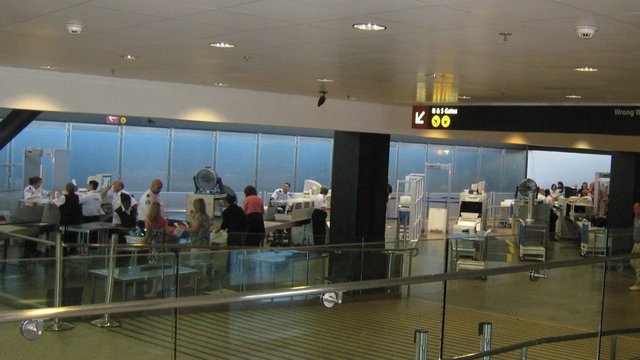
Airport Security Check that uses X-Ray scanning.Source
After you disembark from your taxi and you head to the check-in offices and the security checks you will meet the real airport security. These guys are actually coming out of many backgrounds. Some are just airport employees, trained in hand to hand combat and also in managing crowds and crowded situations. They are the ones that move queues or redirect people in order to have a healthy flow of people to the check-in desks or to the security checks. Some come from even more specialized areas, like the Customs Office, Border Police, Transport Police or just regular Police. They are all trained to handle almost any threat and are usually more or less armed (usually more). They undergo the regular training of their respective offices and their jobs are usually assigned to the best officers. They are also trained in recognizing facial and body language as part of their training.
The National System for Terrorist Alert is an European extra measure for combating the terrorist risks. In case of high risk of terrorist threat, the systems allows for quick change in how security situations are being processed. Each country has its own implementation but the steps are basically the same.
The usual state of the system is CAUTIOUS, but as the level rise, the basic security forces will gradually be replaced or supplemented by special forces, like the ones under the command of the Ministry of Internal Affairs and various Information Services, all of them having combat-ready anti terror squads, with fully automated rifles and protective equipment. These forces are always inside the airport, they are just not visible all the time :)

From the luggage drop to the plane
Have you ever wondered what happens to your luggage once it's on the conveyor belt? It's actually takes downstairs and sorted (most of the time it's automatically). The process of sorting can easily mandate its own article, but shortly said, the system can read the tag and send the luggage to a box which will be transferred either as a whole or just the contents, to the plane which you will board, even before you board it.
The personnel doing this is under a great stress since the time they have to unload, sort the luggage and get it to the people, load the containers with the new luggage, tag everything and transport them is usually under half an hour and being late is a cost that can't possibly be taken out of a worker's pay. A plane that is grounded is losing money, this is why airlines are always trying to keep them airborne as much as possible. The people working here are usually very efficient people which can handle to multitask for extended periods of time.
Sometimes, the luggage is being loaded and unloaded in Dollies, which I am sure you saw if you were ever paying attention at the airport operations while waiting for your plane.

Screenshot from: https://goo.gl/maps/8WSaxiuEgKE2
While an aircraft is pulled at the gate or in the designated parking spot, there are a set of actions that are undertaken in order to get it flying again. The actions are coordinated by the Ground Operations, more on that later. The most important ones are the refueling, the water and waste reload/unloading, technical checks and visual inspection, unloading and loading passengers and luggage and catering reloading. The cleaning is usually done by the flight personnel.

De-icing crane
Apart from these actions, deicing is also performed in cold days to prevent icing to form on the wing, thus reducing the lift. This is done on a special platform, close to the runway so that after the deicing the aircraft can quickly take off before icing occurs again.
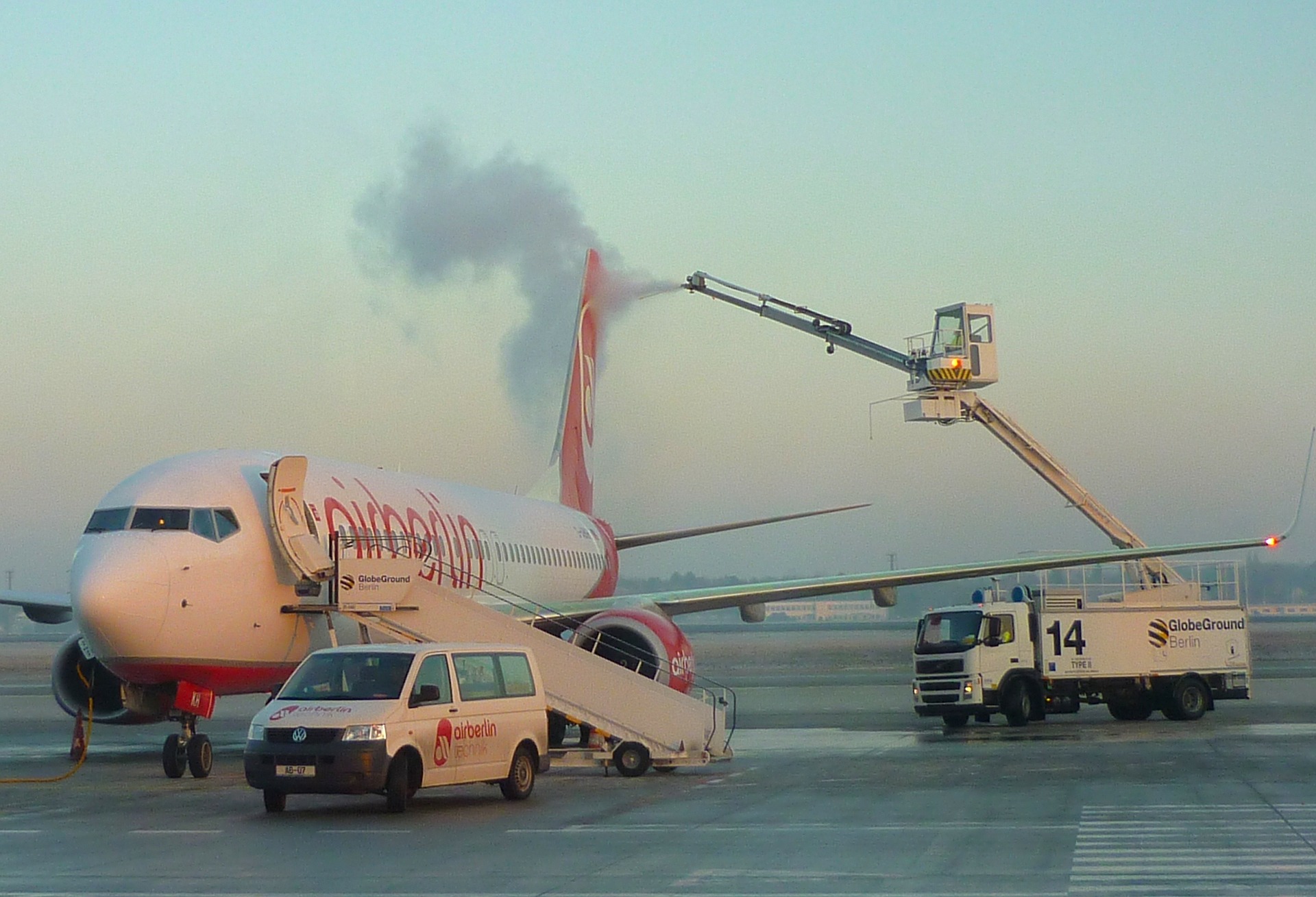
De-icing operation in Berlin. De-icing agent is being sprayed over the aircraft using a remote-controlled high-pressure nozzle. The most common substances used are ethylene glycol or propylene glycol. Source

Fuel tanker
Refueling is usually done from the moment that the aircraft is empty of passengers and until it fills again. Since it is a riskier operation, it is preferred that the aircraft is empty but it is all dependent on each Airport Authority regulation or the international regulations. Different types of refueling tankers are used, from pickup trucks for small 2-seater aircraft up to big 18 wheelers for huge aircraft. The aviation fuel (jet-kerosene or JET A1, A or TS-1 or AV gas - aviation gas) are ones of the most expensive and refined types of fuel. Just talking about the different types of fuel and their differences would mandate another full article.
16 or 18 wheeler tanker performing a refuel operation on a military C-5. Source

Crash tender
In some countries, the presence of a firefighting vehicle or even a crash tender is mandatory during the refueling opeations, again being dependent of each countries regulations. A Crash Tender vehicle is one of the most rugged vehicle in operation on each airport, as it is meant to assist in case of a forced landing or a crash (hence the name) and it must withstand the highest temperatures possible while being able to pump a lot of water or foam, depending on the nature of the fire. The crash tender has remote control nozzles so the firefighters can actually stay inside for the initial moments. Live exercises are done on a regular basis and the firefighters must be oriented towards speed and efficacy.

Pushback tug
Another important airport operation is the pushback tug. Because aircraft move only by the power of their engines makes it impossible for them to back up from the parking stand. The noise and the thrust would make everything in the parking stand be transformed into a projectile which will then be shoved at the glass(usually) terminal. So for pushing back and turning of the aircraft, the use of a pushback is mandatory. The new models, like the one in the picture, can "grab" the front wheel and raise it using a pneumatic lift, just enough for the aircraft to follow the direction set by the tug. The tug is always in contact with the tower, since it also has a transponder on board. It can't move without express approval from the airport controllers.
Little trivia: The towbarless pushback tug (like the one in the image) has no "default" driving position, as the wheel and the seat can turn 180 degrees :D and transform into something that I can describe as close to the Batmobile as it can get. Notice the fact that the steering wheel turns in the OPPOSITE direction when driving backward:
A Creative Commons video showing the pushback operation in detail. Enjoy! Don't miss out the closing of the tug's door by inertia or the ostensibly waving of the "remove before flight" pinright before the video end :D

Follow-me car
This car is used to signal a pilot not accustomed with the specific airport about the route he needs to take to the gate. Additionally used in case of an emergency on the usual route or in the last minute change of the traffic pattern in the airport. Part of the marshaller's branch, the car is usually painted in a yellow and black checkerboard and features a flashing sign which says "Follow-me". The pilot is told via radio to follow the car to the gate. The last part of the maneuver is either done by the marshal disembarking or by use of Visual Docking Guidance System (VDGS).
Wikimedia Commons gives us a picture of a regular follow-me car, if a rather small one.
Not all follow-me cars are as small and powerless, though.

Snow removal
This operation is by far the most ample operation. If the airport is in an area that experiences high snowfall or snowstorms, the airport needs to be able to either work around the clock to keep the areas of operations free of snow and ice, while not allowing the airport to be closed. Indeed, in some cases, the activity is reduced or even halted, and in order for operations to be restarted, the snow removing fleet needs to get out of the hangars and quickly restore all surfaces to their operational state. Usually there are a lot of types of trucks that must operate simultaneously. Because the operational width of the runway is usually more than 45-60 meters (150-200 feet), the plows are used on the sides to push the snow sideways. Next, closer to the middle or if the snow is very high, you have the snow blowers, which eat the snow on one end just like a combine would and shoot it up from the top to one of the sides or in the Transport trucks. Then, for the areas that are not able to be serviced otherwise, the Snow-pushers (modified Bulldozers) push it to other areas. In the end, the snow brush can come and terminate even the finest layer of snow or ice. It is a consistent effort and having watched it a couple of times, I can say that the workers do seem to work like they are a machine. No piece of snow is missed and all of the tarmac is being treated with anti icing materials to prevent skids. Again, keep in mind that these vehicles all have to make a quick pass of the whole runway in those 3-4 minutes between aircraft taking off and landing. All of them have transponders so the controllers know every move.
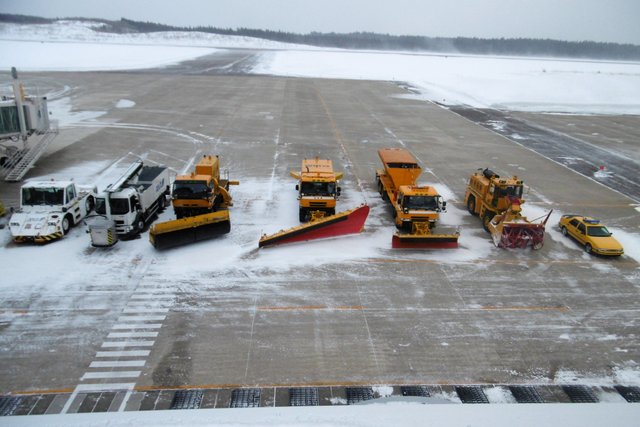
A lineup of the most common snow removal equipment. From left to right: pushback tug, aircraft de-icing truck, snow brush, high speed snow plough with anti-icing dispatch system, snow pusher with anti-icing dispatch system, snow blower and Quality Assurance car. Source

Other ground operations
Caterings trucks, conveyor belts to transfer luggage to and from the plane, Aircraft inspection teams, which inspect each aircraft following a checklist, to ensure that everything is in working order, Runway inspection to make sure that nothing fell on the runway that could pierce a tire from a coming or departing aircraft, bird discouragement teams that drive around the airport actively scaring birds away, since a bird can be sucked into an engine and cause it to fail and so on.

Conclusion
These are all jobs that are undersold, very important jobs that should be sought. But, every time we think about Airport Ground Operations, we are thinking about the controllers. I am going to tell you more about Air Traffic Controllers in the next article, but in order to do so, we need to understand how everything is tied together. People, jobs,areas of operations, responsibilities and training. An Airport is am amazing machinery, and a place which we have to analyze in order to build our communities that we want to succeed.
Before ending I just want to share with you another piece of aviation humor. Hard to pinpoint the source and credit it but this is where I took it now. "P" is the pilot log and "I" is the Inspection solution:
P: No. 2 propeller seeping prop fluid.
I: No. 2 propeller seepage normal. Nos. 1, 3 and 4 propellers lack normal seepage.
P: Something loose in cockpit.
I: Something tightened in cockpit.
P: Evidence of leak on right main landing gear.
I: Evidence removed.
Where would you like to work in an airport? What do you like the most about airports? What do you hate the most? What question about aviation did you always want answered?
Sources
My common knowledge and experience in the field.
ICAO and IATA regulations that cover most of the world require the equipment I have described in order to certify any airport as an International Airport. Where I got too technical, I have offered a way to check the statements.


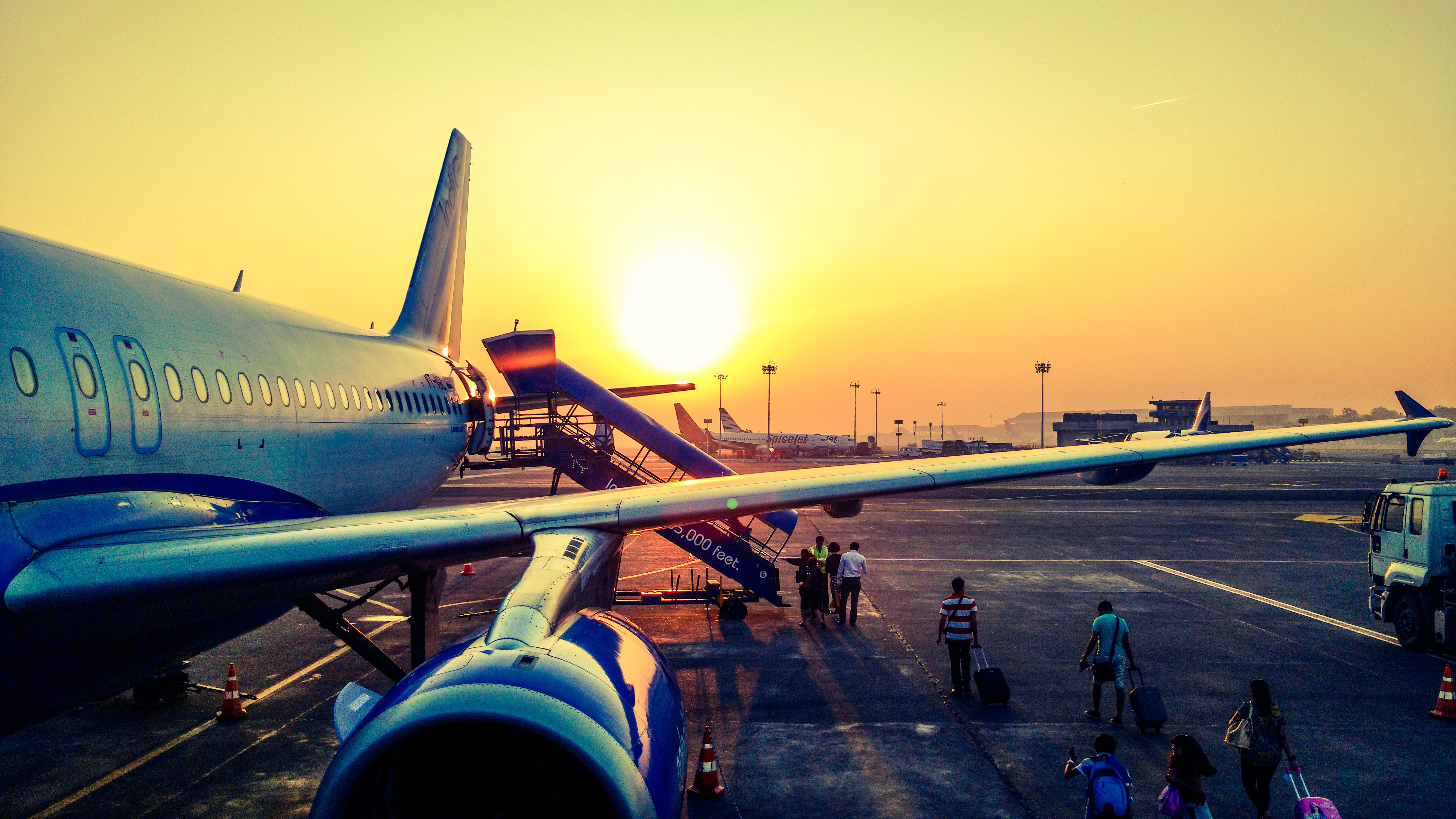

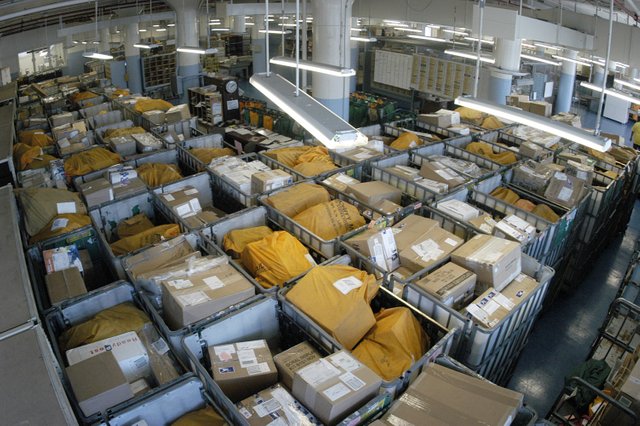
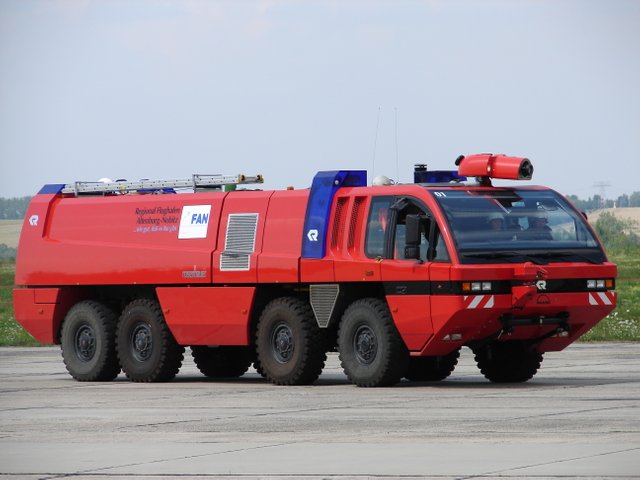
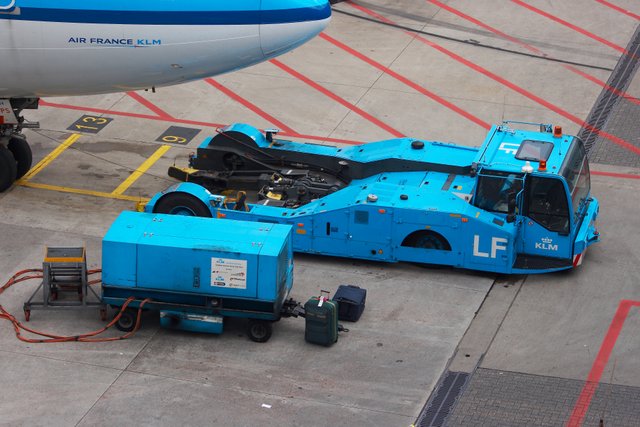
Hi @alexdory! Quite a long time after which we are interacting with each other. Really loved your article about the Airport ground operations.
It reminded me of my training in Airports Authority of India, Guwahati where I took my training as a part of our B. Tech requirement in 2016!
It was really a refreshing time there and it was very interesting to learn about the alphabetical coding they use in aviation, atc operation, about cockpit, etc!
Moreover, I don't know about outside India but in India to replace radar for survelliance work one new technology was already under test which is if I am not wrong known as ADSB.
I loved your article buddy! Wishing you a very happy time ahead.. :)
Cheers!!
ADS-B :)
Yes it's already installed in some airports. It is really helpful.Nice to see someone that shares the knowledge.
We actually simulate all sort of radars, primary, secondary and all sorts of emulation of specific systems.
I will actually write more about aviation if anyone wants to read about it. It's my pleasure to write about it. And I can really get in detail, I would like to see more people interested in it.
Sure, I will be more than happy to read about it! :)
Done! A little too condensed but I think it's sufficient, I can always expand on it later :P
Cheers!
Cheers!! :)
Great look behind the scenes.
To answer your prompts:
Where would you like to work in an airport?
The animal area at an international station. It's just so damned interesting, if the documentary series I've seen about Heathrow's is any indication.
What do you like the most about airports?
Without a doubt, watching people reunite at the reception area.
What do you hate the most?
The price/quality of the food. I can get over paying a 'captive audience' premium, but I've rarely ever been happy with the quality of anything I've eaten. This is especially sad when I've got a layover in an area with a regional dish I'd like to try.
What question about aviation did you always want answered?
Where do you see automation in the next 5 or so years?
I was never inside the animal area, haha, good one!
The food is mostly OK, I like good food, but I can eat just about anything. As the food in the airports goes, you should not hope to eat good regional dishes in anything but the most expensive restaurants there, so I generally avoid it :D
I usually prefer eating "safe" fast food, Burger King, McDonalds or KFC while traveling if the layover is long. This way I don't get that spicy of strange food that will make me want to have my own toilet.
My favorite food is on Qatari flights, they really strive to make it better.
Did you know that their food is engineered to not upset your stomach? The ingredients are selected so that the stomach acidity will stay neutral. I laughed at first but I found out that many companies are engineering their food, selecting the right ingredients in order to not keep the toilets full on long flights and prevent foul odors? :D
The automation... is already in use in many airports. The gates are automated more often than not, marshallers are slowly being phased out. Follow the greens is another system that takes the load off the Air Traffic Controller. Basically you are not communicating with the Tower, you just follow the green lights in front of you just like in a series of intersections. AI or simple traffic rules apply:
Planes are being managed and queued by software nowadays, to allow minimum waiting time for each flight, cargo and postal services are fully automated, people are just there for supervision. As for the piloting, most of the operations are done automatically, including CAT III landings (no visibility) with the Autoland system. If the crew wants and the airline regulations allow, the pilots are just there to turn knobs, they don't have to touch anything.
The passport checks are not mostly done by looking at a camera and scanning the passport.So yes, I think we are there, or as a friend recently said to me, we are contemporary with the future :D
Cool, didn't realize this level of automation was already in effect.
Many more systems are under review. Aviation is improving day by day. Equipment that was only available for jets ten years ago is now available as an off-the-shelf product for 1000$ for your two seater aircraft..
Just a stupid question: I imagine that there are things that cannot be said for security reasons, aren't there?
Not really, but I keep some things out for the same reason. Like transponder codes for emergencies.
Actually, all of the data is public. Airport charts and procedures. What is not public are the photos I have of airports around the world, taken from ramp side. Those are not public, as well as security procedures, which are under the protection of the Police or Gendarmerie or similar bodies around the world.
There are many failsafes and rows of protection, that even if you know everything it will still be impossible to do something. Its why instead of focusing on the airports, they run people over on the streets.
It's just like in case of a bear attack, you don't have to be the fastest, just not the slowest :)
Hey Alex, did fighter jets swing by the airport sometime? :-P I've read a whole review on the F14 Tomcat years back. It was superb. Who knows if it's still serving today, given the rate at which technology is spiking. lol...
I am not working IN the airport, although I'd wish :D
But I do get to see some airports in the world as part of my job, hopefully more this year.
Usually, fighter jets are not allowed in civil airports, but there are some exceptions.
For example, in the Bucharest Airshow of last year!
But i've been in Poland at their Academy and I've seen them actually training :P
So you are the one inside the missile? :D
HA! I like missiles as much as the next guy :D but I am totally against war and violence!
I see! Thanks for the long answer ;)
lolz...
It's official, my day's made!
:D
I am happy to have made your day!
Wait until I will talk about actual Air Traffic Control.
I hope I won't miss this post ;)
DING!
You made this way too easy :D
missed... (not credible I know)
I have actually read the Wikipedia about sgluons afterward :)
Great shmuck I was..
Thanks for educating me!
I can't find such a page. I am very curious. Can you please share the link? ;)
Lovely. I have even never been to an airport before, but reading this article has made me feel like I have been to one. Now when I finally have a reason to be in an airport, I will ball in like a pro lol. Thanks for sharing @alexdory. And your second trial was a goal. :)
Yes, I have more to say, I really need to take some classes on how to write better.
I feel like I could express better.
We will see :P
Interesting stuff! Great behind the scenes look
Thanks! I am writing for @SteemSTEM also, which is an amazing place for anyone working or being educated in sciences. It's not the easiest place to write, you have to be original and source your photos and text, but you might like what you find there. Don't be shy to spend more time writing about something you like. I can give you an example of a fellow medical student, @conficker, which is new but still does an amazing job!
Ive beem thinking of some topics I could write about on steemSTEM. Are you a med student? I'm currently in the application process for med schools with AMCAS
Nope, but the one I linked you to is a med student, and many others there. You could also drop by in the Discord channel - https://discord.gg/W3nvxMr and see if you like the community :D
I'm still fairly new to steem. What is a Discord channel?
Discord is an app, I would say that it's steemit's official chat app.
Found here https://discordapp.com, it allows you to keep in touch with your steemit friends.
Thanks! Ill go ahead and download it
A great behind the scene post !
I will post more, about Air Traffic Controllers next time!
Looking forward to it! @alexdory
Niice one @alexdory, as for where iI would like to work, Hmmm maybe as rhe pilot even though I cant fly a plane yet.
You can try your hand at Microsoft Flight Simulator X or X Plane 11.
Both are amazing simulators.
There are many jobs in the Aviation Industry, some of which are cool, but none can rival the one of a Pilot :D
Awesome stuff bro, your posts are really unique :)
Thanks a lot! I know that most people never reach this information, and it's fun and nice to learn about it.
And I only try to select the non boring stuff :)
Niice one @alexdory, as for where iI would like to work, Hmmm maybe as rhe pilot even though I cant fly a plane yet.